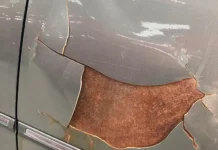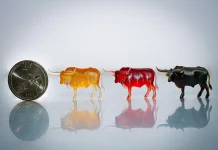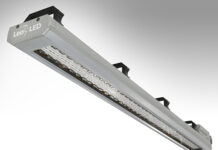By Mike Kay, director of product management, UV Curing, Excelitas Technologies
UV LED solutions have demonstrated the ability to successfully replace older mercury lamp solutions in a number of curing applications by providing reduced operational costs through longer lifespans, reduced electrical consumption, higher reliability and reduced heating of substrates. At the same time, formulation modification has enabled the use of an increasing number of UV LED-curable adhesives, inks and coatings for commercial applications.
However, in a number of applications, such as UV-curable coatings, limitations for UV LED curing remain, preventing wide commercial adoption. Among the available formulations, the variation in curing performance can be quite large, and the biggest challenge to overcome with LED curing remains surface cure.
Challenges in LED curing
When using free radical formulations in a curing application, they are susceptible to oxygen inhibition, which results in the surface of the cured material remaining “tacky,” even when the layers underneath may be fully cured. A number of methods can be used during the curing process to eliminate oxygen inhibition and improve the surface cure. These methods include using an inert gas such as N2 or CO2 to replace the oxygen on the surface of the formulation to eliminate oxygen inhibition. While this method can be quite effective for improving the surface cure of the formulation, it adds an additional layer of complexity to the curing process, as well as additional cost for the inert gas. Moreover, for many applications, such as industrial coatings where a large area is being cured, providing an inert gas blanket over the entire area is not always a feasible option.
Another common method for improving the surface cure of free radical formulations is to provide sufficient energy in the UVC wavelength range (200 to 280nm) to cure the top surface of the formulation. The short wavelength UVC energy does not penetrate into the formulation, providing curing energy on the surface of the formulation to prevent oxygen inhibition from taking place. Traditional mercury lamp systems produce a broad spectrum of light for curing, ranging from about 250nm (UVC) into the IR range above 700nm. This broad range of energy provides both a good through-cure of the formulations along with sufficient energy in the UVC wavelengths to provide a hard surface cure.

When considering replacement of a traditional mercury lamp system to attain the benefits offered by LED, utilizing UVC wavelengths has not been an option for manufacturers, since commercial LED systems are currently limited to wavelengths of 365nm and above, as can be seen in Figure 1. Therefore, if surface cure is an issue when using an LED-based light source, additional exposure to deep-UV irradiation from a lamp-based system or curing under inert-gas blanket is most often required to achieve a tack-free surface.
Replacing the lamp-based system with post exposure to deep-UV LEDs is a solution that would allow manufacturers to move to a completely LED-based curing solution. Unfortunately, limitations in output power, lifetimes and availability of UVC LEDs, along with high cost of the UVC die, have made an LED-based solution impractical for commercial applications.
The challenge in developing a UVC LED system is related to the limitations in the die, which currently produce more heat than light, with quantum efficiencies as low as 10 percent. Greater non-radiative recombination is associated with defects in the die, making it difficult to extract light.
As a result, it is incumbent on the system designer to be resourceful in utilizing cutting-edge LED packaging materials and methods, innovative thermal management techniques and advanced light collection and delivery optics. When designing a UVC LED system for formulation, curing every photon counts.
Advances in UVC LEDs

During the last five years, significant improvements have been seen in the efficiency and lifetimes of UVC LEDs. Increased research and development spending by multiple LED suppliers in the area of UVC LEDs has resulted in technology breakthroughs, providing rapid advancement in the core technology (see Figure 2). Much of this development has been targeted toward the use of UVC LEDs for the significant market of sterilization and disinfection, where the goal is wavelengths below 280nm. However, as die manufacturers develop products down to 280nm and below, applications such as UV curing also reap the benefits. Improved output power and increased current densities, along with improved manufacturing yields to reduce LED die costs, have brought the idea of a practical UVC LED system for surface curing closer to realization.
In 2015, researchers at Excelitas Technologies began to explore the irradiance, exposure and wavelength requirements for industrial curing solutions. Utilizing an in-house materials research lab, the feasibility of adding UVC LEDs into a commercial LED curing system was investigated.
The first UVC LED test system was developed in 2015, utilizing 285nm die. The relatively low peak irradiance of 100mW/cm2 was due, in part, to the LEDs only being available in a pre-packaged LED array from the supplier. This limited the system design capabilities to maximize the output.

Initial testing showed that both adhesive and coating formulations that exhibited a “tacky” surface after very large exposure (up to 30J/cm2) of UVA (395nm) LEDs could attain a hard, cured surface along with significantly reduced UVA exposure with the addition of post exposure to the 285nm LED. However, a fairly large exposure of the UVC LED – up to 5J/cm2 was required to provide an acceptable surface cure. When considering the very low irradiance of 100mW/cm2, the exposure time needed to achieve this energy made the results interesting for further investigation, but still impractical for real-world applications.

By 2017, UVC LEDs were no longer limited to pre-packaged LED modules and were available in the bare die. This allowed for greater flexibility in utilizing system design to maximize the output. With a peak irradiance of 700mW/cm2 over a 50mm curing width, as seen in Figure 3, this represents a 600 percent improvement in output from the first generation after less than two years. The second-generation UVC LED system (Figure 4) has a center wavelength at 278nm, slightly lower than the first generation, with much higher peak irradiance.
Follow-up testing was done using the AC8050-UVC on the same adhesive and coatings formulations as the first generation. Results showed that by using the higher irradiance, lower wavelength UVC system, it was possible to reduce the required UVC exposure to as low as 1.2J/cm2 to achieve the same hard surface cure.
During this time, improvements also were being made to the available formulations of UV coatings designed specifically for curing with LED. New testing done on commercially available coatings showed that providing a post-cure exposure of only 200mJ/cm2 from the UVC LED could provide a tack-free surface cure on these formulations. Two experimental coatings also were included in the testing and, with as little as 20mJ/cm2 post cure exposure from the AC8150-UVC, were able to achieve a hard, tack-free surface cure.
Summary
It has been shown that with the enhancements in UVC LED technology, surface cure challenges that have previously prevented adoption of a full UV LED curing solution are being overcome. When paired with a UVA LED system, providing just a little UVC exposure for post cure not only provides a tack-free surface but also reduces the total dose requirements. When viable UVC implementations are then combined with the advancements in formulations, further improvements can be seen to minimize the dosage needed while still achieving a hard surface cure.
Ongoing advances in UVC LED technology will continue to benefit the UV curing industry by allowing for an LED-based curing system to provide improved surface cure of adhesive and coatings formulations. Although the cost of a UVC curing system remains higher than that of a traditional Hg lamp-based system, the advantages of LED technology in reducing ongoing operating costs of the system will help to overcome the initial cost of the equipment.
As there is a continued advancement in the core UVC technology to improve power output while increasing lifetime, commercial success will depend on advanced system design optimized for the application, helping to balance cost vs. performance. Further testing still is required to determine when that balance will be met.
For more information, visit www.excelitas.com or call 800.775.6786.






